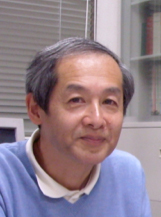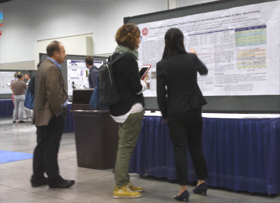Analysis of the archaeological specimens with protein chemistry and mass spectrometry to address the issues of ancient culture and civilization
 [Release: January, 2017]
[Release: January, 2017]
Professor Takashi Nakazawa
Course of Chemistry
Department of Chemistry, Biology, and Environmental Science
Faculty of Science
Nara Women's University
It is well known that milk and eggs need to be stored in refrigerator to avoid rotting, especially in hot summer days. This is because proteins in foods are good nutrients not only for human but also bacteria and fungi. In spite of our common sense that proteins would rapidly be decomposed without some care for storage, collagen was identified in 80-million-year-old dinosaur bones1, owing to recent advance in mass spectrometry using a state-of-art technology called soft ionization. The amino acid sequence of a protein is encoded in the DNA sequence of the corresponding gene. This relationship is applicable to collagen, making the analysis of amino acid sequence with mass spectrometry possible to identify the animal species from which collagen was prepared. In this context, we identified the origin of 300-year-old animal glue contained in an ink stick for Chinese and Japanese calligraphy2; the result indicated that the source of animal glue was cattle hide. In the similar manner, but with some difficulty due to an extremely limited availability of the sample and its possible deterioration, we could identify collagen derived from cattle (again!) in a tiny fragment of ink stick excavated from Heijo-Kyo ancient capital site dated to the mid 8th century. It was not until AD 610 that a Chinese ink stick, along with papermaking and perhaps the method of preparing animal glue, was brought to Japan by a Korean Buddhist monk called Damjing in the era when Empress Suiko ruled the country. Therefore, the ink stick we analyzed might be a brand-new one manufactured in ancient Japan.
The older archaeological specimens we dealt with include the mural paintings remained in an Egyptian underground grave (Mastaba) built at the beginning of the Sixth Dynasty (BC 2325-2150) in the Old Kingdom. The surface of the wall was painted with colored dyes or pigments, which could possible be fixed with a binder such as animal glue, egg white and yolk, or plant gums. Speculating that animal glue was used as a binder, we analyzed the aqueous extract of a piece of the wall painting as we had done for the 1,200-year-old ink stick, to find again that collagen was originated from cowhide. Ancient Egyptians domesticated cattle, sheep and goats, pigs, and donkeys.3 It is, therefore, not unreasonable to result in detecting cowhide used to prepare animal glue, while it is still surprising that collagen has been preserved for more than 4,000 years without any protection from spontaneous or biological degradation. Additionally, a legend had it that Cleopatra had a habit of taking a milk bath. It is then possible to establish this legend by finding milk casein in an ancient bath-tab somewhere in Egypt, provided such a miraculous fortune that both the bath tab and casein remain undestroyed.
Followed by the analysis of Egyptian mural paintings, further examples of collagen derived from cowhide were obtained for Romano Egyptian paintings (AD 180)4,5 and mural paintings of Bamiyan Buddha (AD 500-550), as collaborative works with Professor Yoko Taniguch (Tsukuba University). These results commonly indicate that all the animal glues found in ancient specimens consisted of cattle collagen in the time scale and regions ranging from 1,400-year old Afghanistan Buddha to 4,400-year-old Egyptian wall paintings. If we assume that the animal glue was invented in ancient Egypt, it took more than 3,000 years for the culture of animal glue to migrate all the way to ancient Japan.
Recent physicochemical studies have successfully interpreted the strong adhesive property of collagen molecules as arisen from the triple helical structure, which consists of three twisted strands of collagen molecules (usually two α-1 chains and one α-2 chain in type I collagen). In agreement with this structural feature of collagen, we have found that at least three regions in the long triple helix (about 1,000 amino acid residues long) are especially resistant to degradation due to ageing. In particular, a peptide fragment involved in one of these regions was detected almost invariably in our archaeological specimens of animal glue. The amino acid sequence of this peptide corresponds to that of one of the few peptides preserved in the fossilized bone of 80-million-year-old dinasour.1 We are now trying to understand the degradation process of collagen in the archaeological timescale, extending the materials from animal glue to bone specimens up to several tens of thousand years ago. The invaluable bone samples of archaeological value are generously provided from our collaborators including Profs. Mehdi Moini (George Washington University), Yoichi Nishiyama (Nara University), Akira Tsuneki (Tsukuba University), and Seiji Kadowaki (Nagoya University). We hope that we could shed light on a very long history of the invention and exploitation of animal glue consisting of collagen, based on the solid background of chemistry.

Graduate student is presenting our poster. Prof. Moini (left).
References
1. Schweitzer, M. H. et al. (2009) Biomolecular characterization and protein sequences of the Campanian hadrosaur B. canadensis. Science 324, 626-631.
2. Kawahara, K. et al. (2011) Identification of animal species by the MALDI-MS of collagen in animal glues of Chinese ink sticks. Proceedings of the 59th ASMS Conference on Mass Spectrometry and Allied Topics, Denver, Colorado, USA.
3. Ikram, S. (2000) Meat processing. In Chapter 25, Ancient Egyptian Materials and Technology (Eds., Nicholson, P. T., and Shaw, I.) Cambridge University Press, pp. 656-671.
4. Mazurek, J. et al. (2014) Characterization of binding media in Egyptian Romano portraits using enzyme-linked immunosorbant assay and mass spectrometry. e-Preservation Sci. 11, 76-83.
5. Nakazawa, T. et al. (2016) Mass spectrometry of collagen and casein in the remains of the 5th to 7th century Bamiyan Buddhas. Proceedings of the 64th ASMS Conference on Mass Spectrometry and Allied Topics, San Antonio, Texas, USA.

